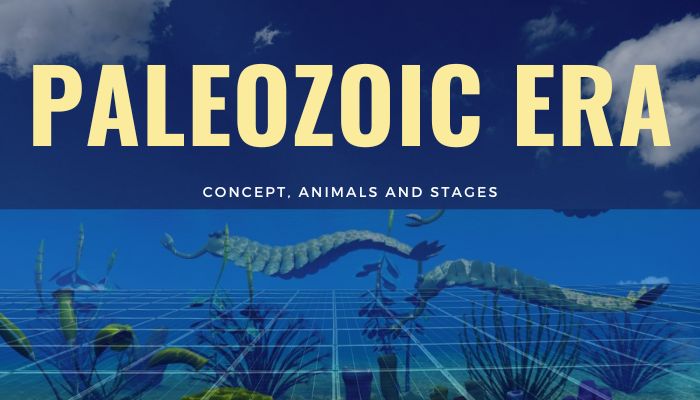Paleozoic Era: We explain what the Paleozoic era was and what this geological stage consisted of. In addition, the periods that constituted it and its plants and animals.
What was the Paleozoic Era?
The Paleozoic Era, Primary Era or simply Paleozoic, was one of the eras of the geological time scale, that is, the scale with which the history of the world is measured. It was the first of the three geological eras of the Phanerozoic eon that began 541 million years ago and continues today. The two following eras are the Mesozoic and the Cenozoic.
The term Paleozoic means “ancient life” (from the Greek palaio, “ancient”, and zoe, “life”), a name that was assigned to this period because in it the oldest forms of animal life, which emerged at the end of the previous era, proliferated and diversified, and the first beings with shells or exoskeletons appeared. Keep getting this Field Diary information!
The beginning of this temporal stage, which lasted more than 290 million years, was 541 million years ago with the dissolution of the supercontinent Pannotia, which fragmented into four continents. Its end took place 251 million years ago, with the formation of the supercontinent Pangaea and the beginning of the Mesozoic.
The Paleozoic era was an extremely rich period from a biological point of view, since it represented the transition from the domain of invertebrate animals to that of vertebrates. During this period, the seas were filled with life and some organisms migrated to land. In this way, plants and animals adapted to new habitats and expanded throughout the planet.
From a climatic point of view, this period was characterized by a warm and stable climate that coincided with the proliferation of oxygen in the atmosphere. This occurred after the Upper Ordovician glaciation, when a cold wave caused one of the two great mass extinctions of species of the Phanerozoic eon. Keep getting this Concept of interpretation information!
KEY POINTS
- The Paleozoic era was a geological era that began 541 million years ago and ended 251 million years ago.
- It is divided into six periods: Cambrian, Ordovician, Silurian, Devonian, Carboniferous and Permian.
- It was characterized by the appearance of complex multicellular organisms, the diversification of marine fauna and the land colonization of plants, insects, amphibians and reptiles.
- It ended with the Permian-Triassic mass extinction that caused the disappearance of 90% of marine species and 70% of terrestrial species.
Stages of the Paleozoic Era
The Paleozoic Era is classified into six periods whose dates are estimated in millions of years (m.y.):
Cambrian (541 m.y. ago – 485 m.y. ago)
This period was characterized by the great diversification of life, known as the “Cambrian explosion,” which filled the seas with living beings and gave way, for the first time in the history of the planet, to complex multicellular beings, different from unicellular organisms such as protists and bacteria. Around thirty-five animal phyla emerged in this period, and biomineralization (appearance of shells and shells) began. Trilobites were one of the life forms with the greatest presence in this stage.
Ordovician (485 million years ago – 444 million years ago)
During this period, life was contained in the seas, as the lack of atmospheric oxygen made life on land impossible. However, the diversification of living beings in the sea was exponential, and towards the end of the period the first plants and fungi emerged out of the water. There was also a glaciation that affected almost all regions of the globe, which caused a mass extinction of species, known as the Ordovician-Silurian mass extinction, only surpassed by the subsequent Permian-Triassic extinction.
Silurian (444 million years ago – 416 million years ago)
In this period, terrestrial life continued to be vegetal and restricted to lake or swamp environments, but in the sea there was a repopulation of complex animals such as fish of different kinds, including cartilaginous fish and spiny sharks, which dominated the warm waters along the equator. At the end of the Silurian another mass extinction event occurred, known as the Lau event, which was due to the fall in sea levels but was much smaller than the Ordovician-Silurian mass extinction event.
Devonian (416 million years ago – 359 million years ago)
In this period, bony fish appeared and large coral reefs developed. In addition, ammonites emerged and other earlier life forms continued to exist but are now extinct, such as trilobites. Seed plants appeared and spread over land in this and the next period, and the first amphibious animals and the first terrestrial arthropods emerged. Towards the end of the period, another major extinction occurred, affecting mainly marine life.
Carboniferous (359 million years ago – 299 million years ago)
Most coal was formed during this period, as vast forests were buried. Amphibians diversified, invaded land, and gave rise to the first reptiles. Land insects became abundant and large, given the high presence of oxygen, which reached levels of 35% in the atmosphere. At the end of this period, the supercontinent Pangaea was formed, and the period culminated in a new ice age.
Permian (299 million years ago – 251 million years ago)
This was the last period of the Paleozoic era, and saw the appearance of the first ancestors of mammals, turtles and dinosaurs (lepidosaurs and archosaurs). Climatically, this period tended towards aridity, with glaciers retreating and many swamps drying up. Towards the end of the period, the Permian-Triassic mass extinction occurred, one of the largest on record, in which 90% of marine life and 70% of terrestrial life became extinct. The biological cause of this catastrophic event is unknown, but some hypotheses propose a crisis caused by high temperatures, a change in the Earth’s carbon cycle, an increase in volcanic activity or the impact of a meteorite.
